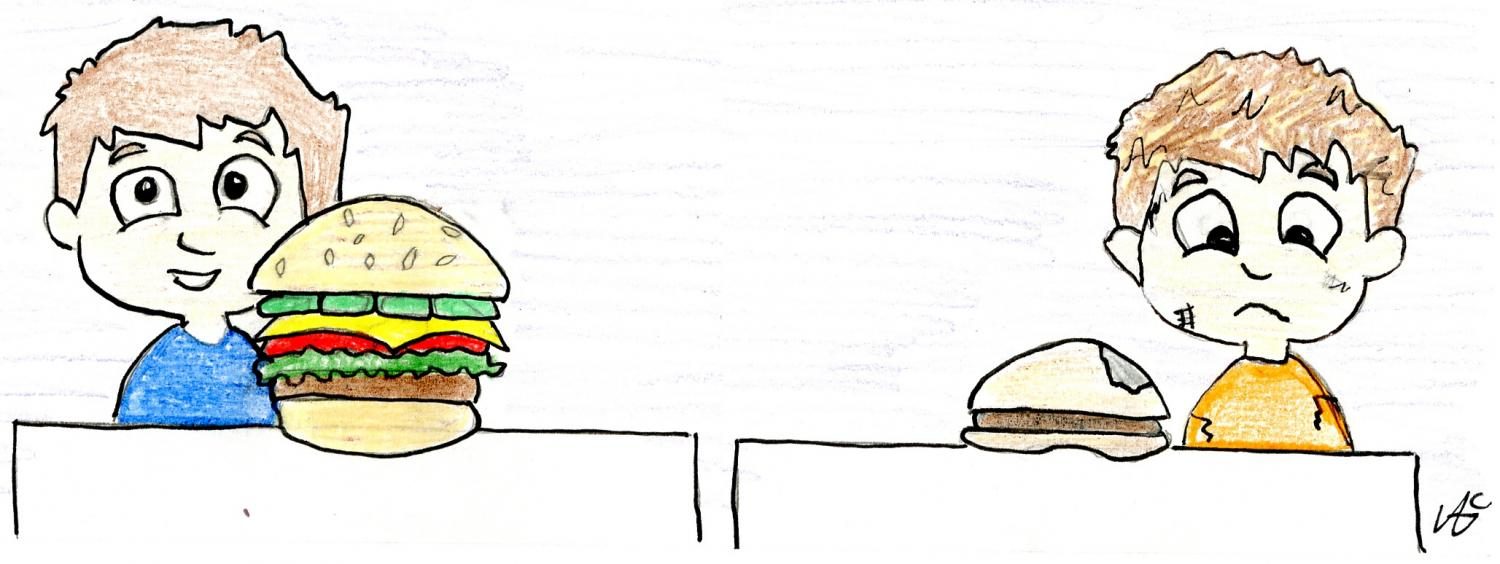No shame
Students humiliated for being unable to pay for school lunches
School lunches can cost anything from $2 to $3. When a student doesn’t have this in their lunch account, cafeteria workers across the country are often required to throw the student’s hot meal away, give the student a cold option or even nothing at all. In separate cases, students were often forced to wear wristbands or have the words “I need lunch money” branded on their arm.
Holding these children accountable for the balances in their student accounts through cold alternatives, throwing their lunch away or branding them with markers is referred to as “lunch shaming.” The students directly receive the punishment from the school instead of the parents who are often the ones in charge of the lunch accounts.
In Canonsburg, Pennsylvania at the start of this school year, Caitlin Dolan attempted to purchase a school lunch. After discovering a debt from the previous year, Dolan watched as her lunch of pizza and vegetables was thrown away.
Lunch shaming forces the students to be denied a necessary, fulfilling meal. Lunch shaming also lets other students invade the financial privacy that every student has a right to because it shows that the students don’t have enough money to afford lunch. Parents trust that their kids are in good hands when they go to school and that includes receiving one of the three necessary meals a day.
School districts should have the best interest of the students in mind. If students experience this type of embarrassment, will they be willing to participate in class or be willing to come to school every morning? Some students face bullying everyday, and by adding lunch shaming to the list, it will open them up to not only bullying from their peers, but from lunch officials as well.
The issue of lunch-account debt should be taken up with the parents or guardians of the students. Emails and phone calls are just two examples as to how to communicate better about these issues. Expecting the students to talk to the parents about the debt situation is not enough. In the end, no child should be punished for something that is out of their control.
Although this issue has been an ongoing situation, the Department of Agriculture has brought more attention to it. They required that by July 1, states must establish policies on how to treat students with a debt in their lunch account.
They concluded that lunch-shaming cases should be handled on a local level, but required states to formalize their debt policies. They aren’t telling schools what to put in their policies, but are only requiring that they have something.
Policies that work to end embarrassment between students need to be put in place. This could be in the form of communicating more with the parents, working out payment plans or simply not allowing cafeteria workers to deny or replace a student’s lunch. New Mexico took the first step towards this direction by requiring schools to work with parents and abolishing the cold-lunch alternative offered to those without lunch money.
On a more personal note, concerns should be directed at local school districts. Despite the possibility of future state laws, the school districts alone are the ones required to make policies regarding how they will handle student lunch debts.
Parents and concerned community members are also encouraged to call their local congressman or congresswoman to explain the importance that all students have access to lunch, even if they have a negative balance in their account.



